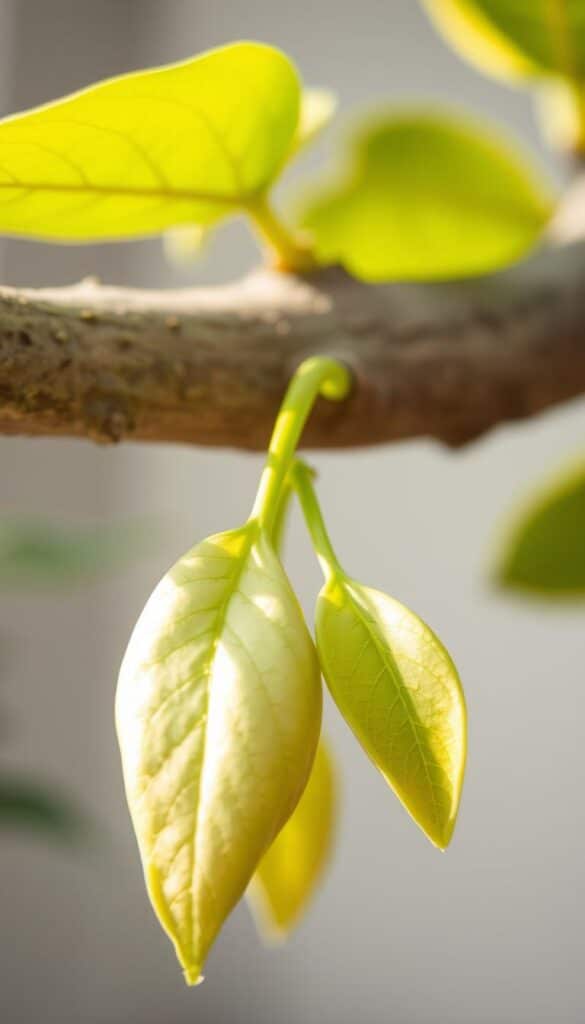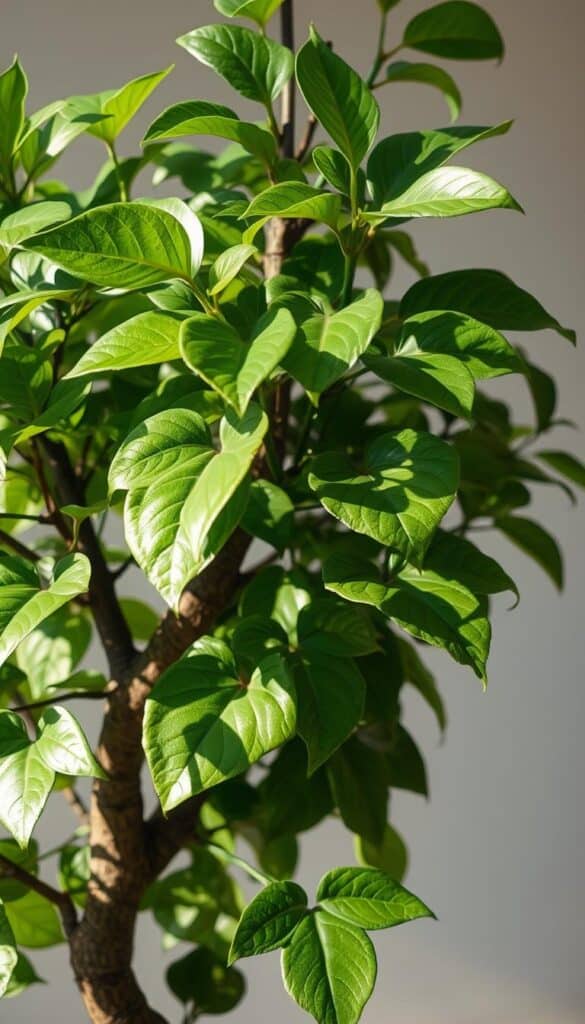When I first brought my ficus tree home, I was excited to watch it grow and flourish. But as time passed, I noticed it wasn’t looking its best. The branches seemed a bit wild, and the leaves weren’t as vibrant as I’d hoped. That’s when I realized the importance of proper pruning and trimming.
I started by learning about the basics of ficus care. I discovered that pruning isn’t just about cutting branches; it’s about encouraging healthy growth and maintaining the tree’s natural shape. Routine pruning during the dormant season and careful trimming at growth nodes can make a big difference.
One of the most important lessons I learned was the need to protect my space and prepare my tools before starting. Using clean, sharp tools helps prevent spreading diseases and ensures clean cuts. I also found that following expert guidelines on timing and cutting methods is crucial for the tree’s health.
Through this journey, I’ve gathered tips and tricks from trusted horticulture sources. In this guide, I’ll share step-by-step advice to help you master ficus pruning and trimming techniques. Whether you’re a seasoned gardener or a new plant parent, these insights will help your ficus tree thrive.
Preparing Your Space and Tools
Before diving into pruning, it’s essential to set up your workspace and tools properly. This step ensures efficiency, safety, and the health of your plant.
Protective Measures with Drop Cloths and Coverings
To protect your floors and furniture from the sticky sap, lay down drop cloths or old sheets. This simple step saves time and effort in cleaning up afterward. I learned the hard way when I once skipped this step and ended up with stubborn sap stains on my carpet!
- Use drop cloths or old sheets to cover surfaces.
- Wear thick gloves and long sleeves to protect against sap.
Sanitizing and Sharpening Your Pruners
Clean, sharp tools are crucial for making precise cuts and preventing the spread of diseases. I sanitize my pruners with 70% isopropyl alcohol and sharpen them regularly for the best results.
- Sanitize tools with 70% isopropyl alcohol or a chlorine bleach solution.
- Sharpen pruners for clean cuts that promote healthy healing.
Setting up a designated pruning area in your garden or home can also enhance efficiency and safety. Controlling stray water and debris helps keep your space neat. By carefully preparing your space and tools, you’ll not only protect your surroundings but also ensure your plant stays healthy and thrives.
Understanding Your Ficus: Growth Patterns and Care Benefits
Understanding your ficus tree’s growth patterns is key to its health and appearance. Knowing how to spot new growth and identify dead branches can make a big difference in keeping your plant thriving.
Identifying New Growth Versus Dead Branches
When inspecting your ficus, look for signs of new growth. New branches often have vibrant leaves and plump nodes, which are small, raised points where leaves grow. In contrast, dead branches are usually brittle, discolored, and lack leaves.
| Feature | New Growth | Dead Branch |
|---|---|---|
| Appearance | Vibrant leaves, flexible branches | Brittle, discolored wood |
| Node Condition | Plump, green nodes | Dry, discolored nodes |
| Branch Texture | Smooth, firm | Rough, brittle |
Removing dead branches helps your ficus by letting more light reach healthy areas and encouraging new growth. Regularly checking each branch and node ensures your plant stays robust and full. This careful inspection is crucial for long-term care and maintaining your ficus’s natural beauty.

Step-by-Step Guide: ficus pruning and trimming techniques
Mastering the art of pruning and trimming your ficus tree involves precision and care. This step-by-step guide will walk you through the process, ensuring your plant stays healthy and thrives.
Proper Cutting Methods and Timing
To encourage healthy growth, make clean, angled cuts just above leaf nodes. This technique stimulates new growth and maintains your plant’s natural shape. Timing is crucial—optimal pruning occurs during the dormant season when the tree is less active.
| Technique | Method | Safety Measure |
|---|---|---|
| Clean Cuts | Use sharp tools for precise cuts above nodes | Sanitize tools with 70% isopropyl alcohol |
| Managing Sap | Wear gloves; cover surfaces with drop cloths | Protective gear prevents sap contact |
Managing Milky Sap and Ensuring Safety
Ficus trees produce milky sap when cut. Wear thick gloves and cover surfaces with drop cloths to avoid stains. Sanitize tools regularly to prevent disease spread and ensure clean cuts for proper healing.
Seasonal Pruning: When to Trim and Water Your Ficus
As the seasons change, so do the needs of your ficus tree. Understanding how to adapt your care routine can make a significant difference in its health and appearance.
Guidelines for Spring, Summer, and Winter Care
Seasonal variations play a crucial role in determining the best times for pruning and watering. Here’s how I adjust my approach throughout the year:
| Season | Pruning Tips | Watering Recommendations |
|---|---|---|
| Spring | Light pruning to encourage new growth and branching. | Water weekly, as new growth increases water needs. |
| Summer | Maintain shape with light trimming; avoid heavy cuts. | Continue weekly watering, adjusting for higher summer humidity. |
| Winter | Extensive pruning during dormancy for shaping. | Reduce watering to every 10–14 days, as growth slows. |
By following these seasonal guidelines, you can ensure your ficus tree remains vibrant and healthy all year round. Remember to adjust your care routine as the seasons change to support your tree’s needs.
Managing Unbalanced Growth and Shaping Your Ficus
Evaluating my ficus for unbalanced growth is the first step in achieving a harmonious shape. I look for areas where the foliage seems sparse or where branches grow unevenly, as these spots can hinder the tree’s natural symmetry.
Strategies for Achieving Symmetry and Visual Appeal
Selectively trimming branches is crucial for distributing light evenly throughout the canopy. By doing so, I ensure that every part of the tree gets the light it needs to stay healthy and vibrant.
- Evaluate the tree for unbalanced areas that disrupt its shape.
- Trim branches to allow even light distribution across the canopy.
To achieve symmetry, I prune branches at specific nodes to redirect growth outward and upward. This strategic cutting not only improves the tree’s structure but also enhances its visual appeal.

One of the most effective strategies is to remove overgrown sections. This simple step stimulates fresh foliage and maintains a balanced appearance. Even minor adjustments, like trimming the tip of a branch, can make a significant difference in the overall look of the tree.
- Remove overgrown sections to stimulate new growth.
- Make purposeful cuts to encourage balance and symmetry.
I’ve learned that every cut should have a purpose, whether it’s to redirect growth or enhance light distribution. By following these strategies, I’ve been able to shape my ficus into a more attractive and balanced tree. The key is to be intentional with each trim, ensuring that every adjustment contributes to the tree’s overall health and appearance.
Tools for Root and Top Canopy Maintenance
Maintaining both the root system and the top canopy of my fig tree is essential for its stability and health. Proper tool selection plays a vital role in keeping the tree balanced and thriving indoors.
I use a combination of root pruning tools and canopy trimming tools to ensure my fig tree stays healthy. For root pruning, I prefer using a sharp, sterile knife or garden fork to gently remove dead or overgrown roots. This helps prevent the tree from becoming pot-bound and maintains its compact shape. For the canopy, I rely on high-quality pruning shears that make clean cuts just above the nodes, promoting new growth and maintaining the tree’s natural shape.
| Tool Type | Purpose | Benefits |
|---|---|---|
| Root Pruning Tools (Knife/Fork) | Remove dead or overgrown roots | Prevents pot-bound issues; promotes healthy root growth |
| Canopy Trimming Tools (Shears) | Trim branches and shape the canopy | Encourages new growth; maintains balanced shape |
Repotting my fig tree with nutrient-rich soil is another crucial step. I remove a portion of the root ball and refresh the soil to provide essential nutrients for long-term growth. This process also helps keep the tree compact, which is especially important when growing indoors.
By maintaining both the root system and the top canopy, I ensure my fig tree remains stable and healthy. Regular pruning prevents the tree from becoming top-heavy, while a well-maintained soil environment supports its nutrient needs. This balanced approach keeps my fig tree thriving indoors, even as it grows taller and fuller over time.
Detecting Stress and Disease Indicators in Your Ficus
Over time, I noticed my ficus tree showing signs of stress and potential disease. These signs can be subtle, but they signal the need for immediate action to protect your plant.
Addressing Watering Issues and Leaf Drop
One common stress indicator is leaf drop, often caused by over- or underwatering. Yellowing leaves can also signal root issues. Adjusting watering routines and increasing humidity can help. Here are some key points:
- Check soil moisture regularly to avoid overwatering.
- Adjust watering schedules based on the season.
Pest Prevention and Treatment Guidelines
Pests like aphids and spider mites can weaken your plant. Regular inspections and prompt treatment are essential. Here’s a summary of common issues:
| Indicator | Causes | Solution |
|---|---|---|
| Leaf Spots | Fungal diseases | Improve air circulation |
| Discolored Leaves | Nutrient deficiency | Fertilize properly |
| Slow Growth | Light deficiency | Ensure adequate light |
By addressing these issues promptly, you can prevent long-term damage and keep your ficus healthy.
Wrapping Up Your Ficus Pruning Journey
As I reflect on my journey with ficus care, I’m reminded of how much patience and attention to detail have transformed my plant’s health. Regular pruning has become a cornerstone of my routine, helping my tree maintain its balance and thrive indoors.
By sticking to a consistent schedule and observing my plant’s needs, I’ve managed to promote vibrant new growth and keep stress at bay. It’s crucial to monitor branch balance, water amounts, and sap handling throughout the year to ensure your ficus stays robust.
Remember, proper pruning and nutrient management are key to long-term health. I’ve learned to adapt my techniques with the seasons, ensuring my tree always has the care it needs. Don’t hesitate to reach out with your experiences or questions—let’s keep the conversation growing!
Here’s a final checklist to keep your ficus thriving:
- Prune regularly to encourage healthy growth.
- Monitor water levels and adjust with the seasons.
- Watch for signs of pests or disease and act quickly.
- Keep your tools clean and sharp for precise cuts.
